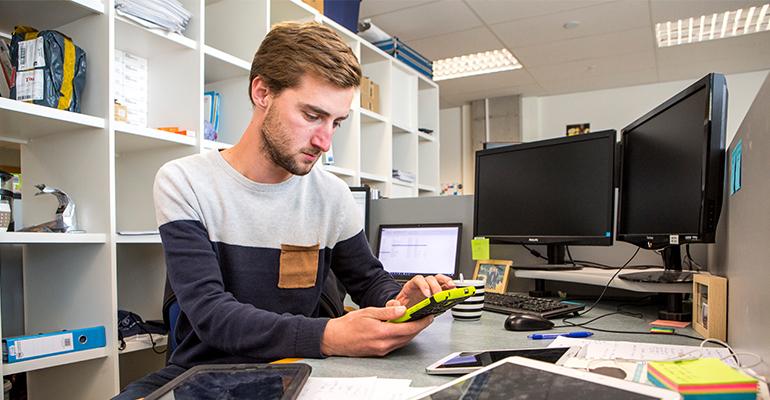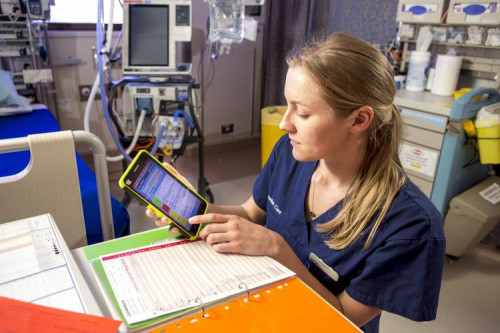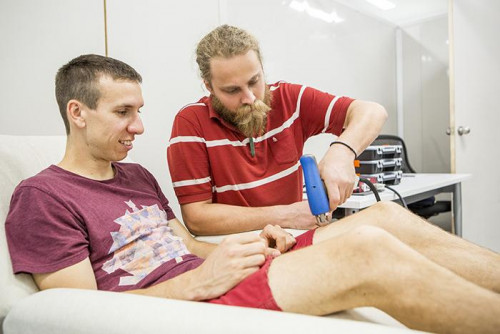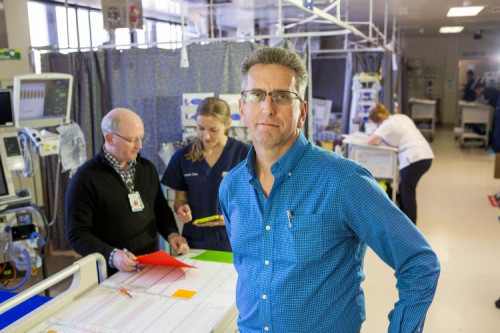Home and community based care – Type 2 diabetes
Giving control of diabetes care to the patient requires non-invasive, easy to use technology. The aim is to encourage them to more regularly and reliably measure their blood sugar and insulin levels and more easily take the prescribed doses. This project focuses on new needle free sensing and insulin delivery technology to let Type-2 diabetes patients manage their own care with less pain and hassle.

Spearhead Leader, Distinguished Professor Geoff Chase – University of Canterbury, Dept of Mechanical Engineering
Professor Peter Hunter, Deputy Director Auckland Bioengineering Institute – University of Auckland
Dr Volker Nock, Senior Lecturer – University of Canterbury and MacDiarmid Institute
Associate Professor Andrew Taberner – University of Auckland
Over the last 20 years health care costs have increased at a much higher rate than the median wage. With diabetes, the impact of this is multiplied by demographics, and socio-economics. This project aims to address some of this equity gap.
This Spearhead team are developing new needle-free sensing and insulin delivery technology to let Type-2 diabetes patients manage their disease without the pain and hassle of finger pricks and injections.
The project takes a “systems solution” approach, offering more personalised treatment of Type-2 diabetes to work in conjunction with the new sensing and insulin delivery technology, which will work with smartphones and wearable technology.
Empowering patients to take on Type-2 diabetes
Type-2 diabetes accounts for around 1 percent of GDP spend and this is expected to rise to about 2 percent in the next 10-15 years. This is around $3 billion in direct and related costs today. If we can personalise care and increase patient-led care this will reduce costs, improve independence and health outcomes, while increasing productivity.
While Type-2 diabetes is incurable, it can be managed to allow many of the 240,000 New Zealanders who have been diagnosed with it, the opportunity to enjoy good health and quality of life.
Managing Type-2 diabetes is complex. The range of insulin is the same across the population, but mismeasurement is common. Failing to keep on top of the variability within that range is dangerous and not as simple as finger prick and thigh stick.
One size does not fit all, and the way measurement and provision of insulin is currently done doesn’t encourage people to keep to good practices. For example, if a diabetic was able to keep an eye on their levels of insulin at the beginning, middle, and end of a regular bike ride after breakfast, this could allow them to reduce their likelihood of hypoglycemia through understanding of their body’s reaction to food, exercise, and time of day. This isn’t currently possible.
For tangata whenua, taking blood is tapu. A non-invasive technology that takes no blood during insulin measurement increases the equity of access for Māori, who are over-represented in diabetes statistics. A Māori business-led approach is a primary focus for commercialisation. For context, 30-50% of Pākeha with type 1 diabetes have an insulin pump or/and a continuous glucose sensor, however there is minimal uptake of this technology with Māori due to cost.

Next generation diabetes care - how does it work?
Three areas are crucial to delivering better home-based Type-2 diabetes care: measurement, management and monitoring.
It starts with new technology that allows for non-invasive monitoring of glucose and insulin levels. This is crucial to a person’s ability to control the disease. The team’s unique needle-free light-based glucose sensors allow quick and accurate blood glucose readings to be taken in the home.
The team also developed technology to deliver insulin to patients as part of their treatment. This has traditionally required regular injections, but researchers have also invented a jet system that delivers a burst of insulin through the skin for single doses, as well as ultra-low cost insulin pumps for those requiring regular insulin. This pump is the first of its kind in the world and is phone-driven, ultra-low-cost, and easy use.
The team is using patient-specific data to create computer models that accurately suggest dosing regimens and treatment plans. These allow better tailoring of drug or treatment dosing to the individual. Results are very promising and the hardware developed will remove many of the financial constraints to measuring insulin. At present the hardware costs between $50-100 a week. The hardware from this project will have a total one-off cost of $100. This was achieved by harnessing novel design, smartphones and wearable devices.

Technology to help patients care for themselves
With its multiple themes of work, from engineering insulin pumps to writing algorithms to model an individual patient’s disease characteristics, the project is a template for examining treatment of chronic diseases.
In addition, the new technology and methodologies developed by the team, from medical sensors to informatics systems, could be applied more generally to healthcare problems. It could also generate intellectual property for local and international commercialisation.
The team now has ethics approval to approach people to be part of their trials.

All images courtesy of University of Canterbury.
Project background
This Spearhead Project commenced in 2016, ending in June 2022 and has received a total of $5.8M funding. The project was initiated through a process whereby a cross-disciplinary group of academics and practitioners came together to design research projects with the aim of supporting solutions for some of Aotearoa-NZ’s grand challenges.
More information
Meet a group of Post Doc and PhD students from the Home and Community Bases Care - Type 2 Diabetes Spearhead project - who took part in the SfTI and KiwiNet commercialisation pre-accelerator program, Rewa. Read more about their experience in; The right tech, the right time, the right connection
Spearhead team member and PhD candidate, Lui Holder Pearson, joined a SfTI video storytelling workshop in May 2021 and produced this video on his work related to the Spearhead research project. Read more about Lui and other SfTI researcher's experience of the workshop in; Reality TV meets hi-tech science